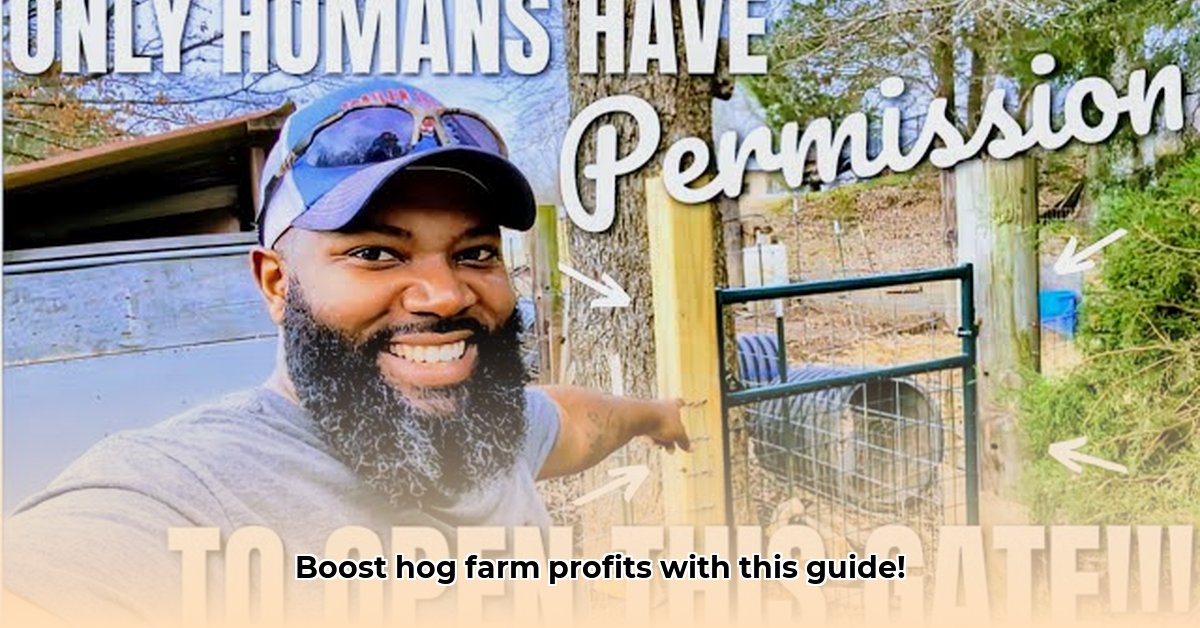
Choosing the Right Hog Feeder from Tractor Supply
Selecting the appropriate hog feeder is paramount for efficient and sustainable hog farming. Tractor Supply offers a variety of feeders, each suited to different farm sizes and pig breeds. Before purchasing, carefully consider your specific needs. What is the size of your operation? How many hogs do you intend to feed? For additional resources on mineral feeders, check out this helpful guide: Tractor Supply Mineral Feeders.
Key Feeder Types:
Troughs: Simple and cost-effective, ideal for smaller operations. However, troughs are prone to feed waste if not properly managed. (Simple open containers for feeding.)
Self-Feeders: Offer continuous access to feed, beneficial for fast-growing pigs. While convenient, they can lead to overconsumption and waste if not carefully monitored. (Feeders designed for continuous access.)
Automated Feeders: Deliver precise feed amounts, minimizing waste and maximizing efficiency. These represent a higher initial investment but are highly beneficial for larger-scale operations. (Electronically controlled feeders for precise feed distribution.)
Essential Features:
Adjustable Feed Rates: Allows precise control over feed distribution, reducing waste and ensuring optimal nutrition. (Allows farmers to control the amount of feed dispensed.)
Durable Construction: A robust feeder endures harsh conditions, reducing replacement costs and minimizing environmental impact. (Built to withstand wear and tear.)
Easy Cleaning: Facilitates efficient maintenance, preventing disease and contamination. (Designed for simple and hygienic cleaning.)
Setting Up Your Hog Feeder: A Step-by-Step Guide
Proper installation is vital for optimal functionality and safety. Follow these steps meticulously:
Site Selection: Choose a level, dry, and well-ventilated location, sheltered from the elements. Avoid areas prone to flooding. (Areas with proper drainage.)
Ground Preparation: Ensure the ground is level to prevent tipping. Any necessary leveling should be completed before installation. (Level ground is necessary for stability.)
Assembly: Carefully follow the manufacturer’s instructions. Take your time; accurate assembly prevents malfunctions. (Consult the provided instructions carefully.)
Securing the Feeder: Anchor the feeder firmly to the ground to prevent accidental tipping, protecting both your pigs and nearby structures. (Proper anchoring prevents accidents.)
Feed Delivery (If Applicable): If using an automated system, set up the feed delivery according to the manufacturer's instructions. Test the system thoroughly before introducing hogs. (Ensure proper functionality before use.)
Safety Note: Always disconnect the power (if electric) before cleaning or maintenance to prevent accidents. (Electricity can be dangerous; safety is paramount.)
Optimizing Feed Management: Beyond Filling the Trough
Efficient feed management extends beyond just using the right feeder. Consider implementing these strategies:
Smart Storage: Store feed in a cool, dry place to prevent spoilage. Use airtight containers to maintain quality and minimize waste. (Maintain quality and quantity.)
Portion Control: Adjust feed amounts according to the pigs' age and weight. Overfeeding contributes to waste and potential health problems. (Feed strategically based on size and growth.)
Waste Reduction: Regularly inspect your feeder for leaks or malfunctions. Clean up spilled feed immediately to maintain a clean environment and prevent pest infestations. (Prevent loss, maintain hygiene.)
Data Tracking and Monitoring: Inform Your Decisions
Regularly monitor feed consumption and pig growth rates to identify potential issues and adjust your feeding strategy accordingly. Utilize a spreadsheet, notebook, or farm management app to track this data consistently.
Essential Metrics:
Daily Feed Consumption: Weigh feed provided and leftover amounts daily. (Monitor daily feed intake precisely.)
Weekly Hog Weight: Weigh each pig weekly to track growth patterns. (Track individual growth to assess nutrition.)
Feed Conversion Ratio (FCR): Calculate the ratio of feed consumed to weight gain (Feed/Weight Gain). This metric is crucial for evaluating feeding efficiency. (Shows efficiency of feed conversion.)
Maintenance and Troubleshooting: Preventative Care is Key
Regular maintenance ensures peak performance and longevity. Clean the feeder frequently, inspect for damage, and lubricate moving parts as needed. Addressing small issues promptly prevents significant problems down the line.
Common Issues:
Feed Jams: Regularly inspect and clear any blockages. (Prevent clogging.)
Malfunctions: Refer to the manufacturer's manual for troubleshooting. (Consult manufacturer instructions for solutions.)
Sustainable Practices Beyond the Feeder: A Holistic Approach
Sustainable hog farming encompasses practices beyond just efficient feeding. These complementary strategies enhance environmental responsibility and long-term success:
Manure Management: Implement effective manure management systems to minimize environmental impact. (Responsible waste disposal is key.)
Overall Waste Reduction: Minimize waste in all aspects of your operation, including water and energy. (Reduce impact on resources.)
Sustainable Feed Sources: Whenever feasible and cost-effective, explore locally sourced, sustainable feed options. (Support local and sustainable practices.)
By combining the right hog feeder from Tractor Supply with comprehensive sustainable practices, you can build a profitable and environmentally responsible hog farming operation.